Calling it The Hall Of Engines is a nice touch. The very building in which Enzo Ferrari lived his early years, the engineering works that his father ran, is now a brick-built pean to the engine maker's art.
Row upon row of gleaming steel sculptures, with their red-crackle finished cam covers. Here the turbocharged V8 from an F40 – as if someone turned the poster from my boyhood bedroom inside out. There the 3.5-litre V12 from Alain Prost’s 1990 F1 car, looking far too small and delicate for an engine with that capacity, that power, that noise.
The mood should be intoxicating, heady. We're here in the literal hallowed halls of Ferrari, at the Museo Enzo Ferrari, deep in the town of Modena. This is supercar central, the event horizon of all the great, insane, fast cars that would emerge from this sliver of Emilia Romagna, the farming bit of northern Italy that's, almost, as famous for its glorious food as for its monstrous machinery.
And yet, something feels a little off . . .
Travelling to Italy is never a chore. We chose to base ourselves in Bologna, east of Milan, north of Florence and south of Venice; so the crowded tourist trail kind of winds around it. That means it’s quieter and easier to negotiate, and on top of that the food is belt-threateningly good.
So being as I had my car-mad nine-year-old son in tow it would have been verging on rude not to go take a look, right?
It's also right on the doorstep of both Ferrari and Lamborghini. So being as I had my car-mad nine-year-old son in tow it would have been verging on rude not to go take a look, right?
What was supposed to be just a bit of jolly fun with my son turned into something a little more profound, though. We visited four museums in all – two belonging to Ferrari, one to Lamborghini and one to Pagani. Each told us more about their respective car makers than perhaps was the intention.
Ferrari worship
Let's start with Ferrari, because, well, you would wouldn't you? Even if you've no interest in cars at all, you know of Ferrari, and have some semblance of an idea of what the brand means and does. So great is the weight of history borne by the brand that Ferrari has chosen to spread it out over two museums. The Museo Enzo Ferrari is the one built into the old Ferrari homestead, while there's another, larger, museum located next to the factory, one town over in Maranello.
We started at the Museo Enzo Ferrari, and for a pretty reasonable €30 we got entry to both museums for my son and I. The Enzo museum is hugely impressive. You enter a vast, vaulted haul in which are, unsurprisingly, a troop of Ferrari's on display. If you know your Ferrari history, you'll not be surprised by what's here: A 212 Inter to start with; a 250 GTO; a 305 GT Lusso; a 330 GTC; some more modern stuff such as a 550 Maranello and its convertible counterpart, the SuperAmerica; and a new SP1 Monza single-seat hyper-plaything. It is, when you boil it down, just some cars parked in a big room, but at least some effort has expended to find some surprises, such as a 250 GTO in black, or that 250 GT Lusso in an arresting shade of metallic brown.
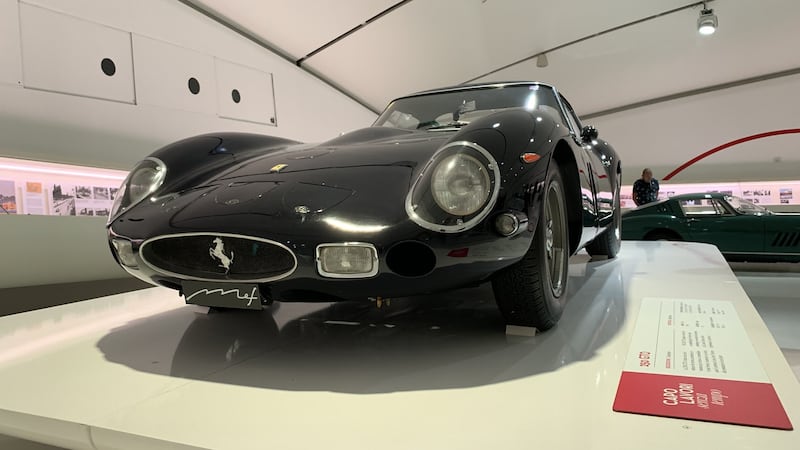
It’s also perhaps unsurprising that there’s some hagiography on the go, here. In the main hall, every few minutes, a lengthy film tribute to Enzo Ferrari plays, portraying his life through both archive and recreation, from the earliest days when he was still a racing driver, right through to his death in 1988. I guess you’d only expect a tribute to Ferrari in a Ferrari museum to be wholly positive, but if you’ve read Brock Yates’ biography of the man, it’ll ring a touch hollow.
Hail to the engine
Better is the Hall Of Engines, which at least focuses on the aspect of cars that most obsessed Ferrari himself. After all, when journalist and racing driver Paul Frere told old man Enzo that his Testa Rossa racing car was too slow down the Mulsanne Straight at Le Mans, because of its massive windscreen, Ferrari's huffy response was: "Oh well, aerodynamics are for people who can't build proper engines."
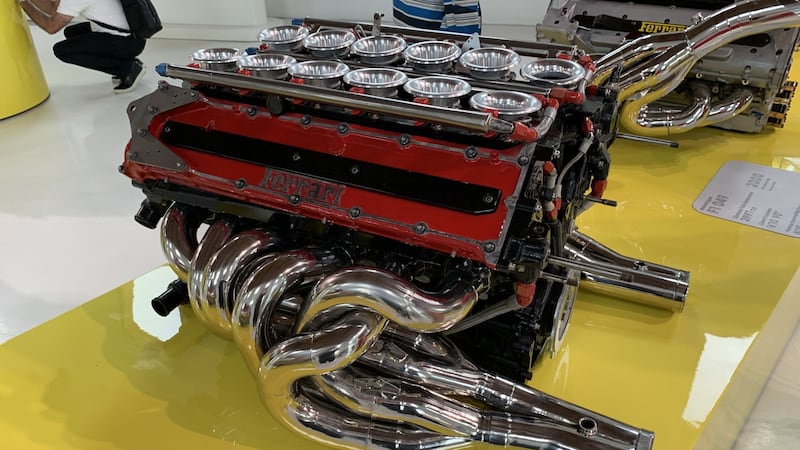
The hall is cool and sparse, the engine themselves verging on the artistic. And there’s a 246 Dino and Prost’s 641 F1 car parked at either end as reminders that engines actually have to go in something.
Over at the Maranello end of things, well, don't go in unless you really, really, like the colour red.
Over at the Maranello end of things, well, don’t go in unless you really, really, like the colour red. The preponderance of Rosso Corsa is a little overwhelming even if you’re prepared for it.
It is impossible not to be impressed. How could you walk among ranks of such cars – 288 GTO, F40, LaFerrari – and not be?
Back outside, though, the emotion quickly fades and you’re left with . . . well, with a feeling of mild deflation. There’s a strong sense of Disney fiction here, a sense that the brand is being squeezed for absolutely everything it’s worth.
Lambo roar
Down the road at Lamborghini things are smaller and more friendly. Instead of two museums Lambo has a single building with two floors. The displays are chronological, in that they start with a Miura and work their way upstairs to a Urus. But other than that the collection is smaller, more eclectic and more accessible than those of either Ferrari museum.
While the Lamborghini museum is very much a hands-off zone, you can at least get up closer to the metal, whether that’s with the heart-stoppingly gorgeous Espada, or the oddball and unsuccessful Lola-Lamborghini F1 car – an interesting display considering just what a disaster that car was.
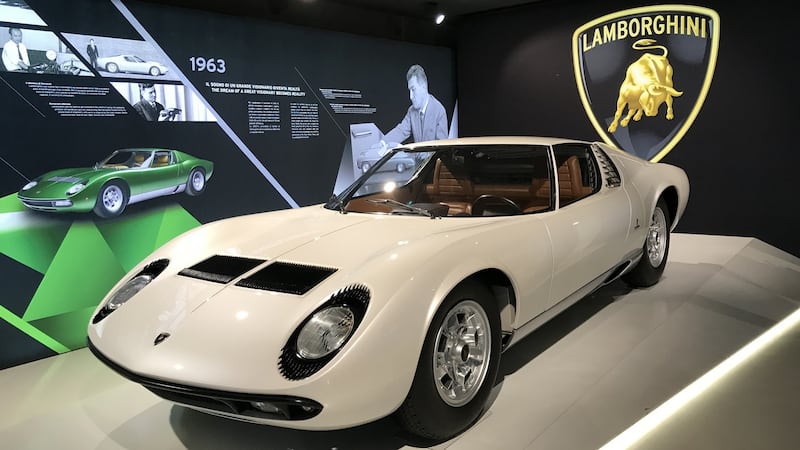
Lambo actually seems to be unafraid of exploring any dark corners of its past, in sharp contrast to the everything-is-awesome feeling over at Ferrari. You’d hardly expect any carmaker to admit to making a boondoggle of a machine like the LM002, but there one is, resplendent in kahki paint, sitting just near a brand new Urus in the upstairs display.
Of course, Lamborghini isn’t the small, home-made car company that this general atmosphere might have you think. It’s part of the gargantuan Volkswagen Group and a quick peek at the factory floor where Huracans and Aventadors are being assembled proves that.
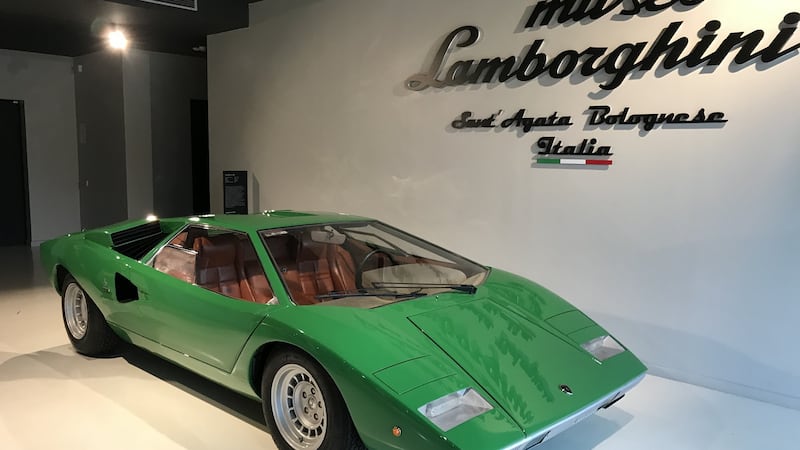
There is one tiny reminder of the old days, though. For all its carbon-and-aluminium tech brilliance, the Aventador’s engine installation is distinctly old school, as the vast V12 and its gearbox are hefted into the waiting chassis by the distinctly uncutting-edge method of five big guys and an engine hoist. Left a bit. Right a bit. Down a bit. Now, heave! And it’s in.
Okay, so what have we learned so far? Certainly, the smaller, friendlier atmosphere of Lamborghini made for a more enjoyable visit and made you leave with a rather sunnier feeling about the brand, which is surely the point of such displays, right?
Pagani pilgrimage
Well, it would if we hadn’t looped back to Modena and visited Pagani (actually it’s in the little town of San Cesario Sul Panaro, just outside Modena). Now, this is the smallest of the four museums we visited. In fact, there were fewer than 10 cars on display and that includes the Zonda parked out by the entrance gate. That very smallness gives me the tingles, though. Sure, Pagani might source his engines from Mercedes-AMG, but the brand still has that sensation of being a small and plucky one.
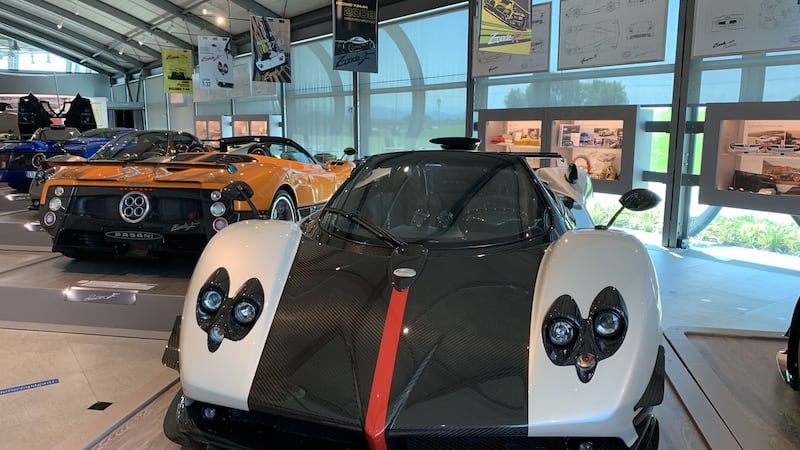
In the museum itself, there is that F2 racer, a home-made scrambler bike, and then six Zondas, plus a lone Huyara. The Zondas are amazing up close, intricate in their details like an F1 car. The display starts with the La Nonna or Grandmother Zonda. This is the second one ever built and which has been Pagani’s prototype and development car. It’s covered 550,000km – far, far more than any client car might be expected to cover. Well, you’d think, but just along the display is a Zonda F (F for Fangio) which its former owner drove every day, in and out to work, to the shops, and in doing so racked up more than 300,000km of mileage. Testament to the solidity of those Merc V12 engines, I guess.
Testament too, to Pagani’s obsession with quality and precision. The cars themselves are fascinating enough, beautiful and brutal, hedonistic in their appointments and ruthlessly efficient in their engineering. But it’s the displays on the walls that capture you more. Sketches. Wind tunnel models. Horacio Pagani’s battered briefcase, still with a dog-eared Lamborghini sticker on one corner.
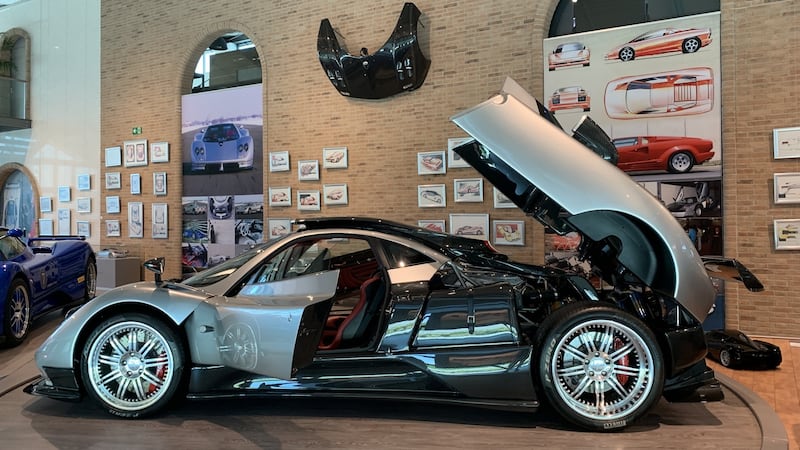
Gifts
That personal touch is evident in the factory itself. It's astonishingly quiet, with the cars being assembled in individual bays rather than on a production line. Even the production of the carbon-fibre parts has a little touch of the artisan. Sat alongside the vast atuoclaves, used to bake the soft carbon-fibre fabric into a hard, resilient structure, is a smaller oven. It's one that Horacio Pagani bought with a bank loan in the 1980s, when he was trying to convince Lamborghini to use more carbon parts. He kept it, started his business with it and now uses it to make small prototype parts for future new Paganis.
Car museums are odd places. They are, in some ways I guess, places of pilgrimage where we car nuts go to pay homage to the brands we love.
Car museums are odd places. They are, in some ways I guess, places of pilgrimage where we car nuts go to pay homage to the brands we love. They are, as are motor shows, in many ways the worst possible place to see a car – it will be static, stuck fast in its glass case, unable to move. That’s something that, especially with cars such as these, seems especially sad.
There is fun to be had, gasps of breath to be taken at the sight of a rare or iconic model and facts to be learned (so many facts) but what really comes through is the character of the car company behind the museum.
Corporate fronts look impressive for shareholders and investors, but if you want to create a real, emotional connection with potential future car buyers, go small, go personal, and make sure that the gift shop is pocket-money friendly. My son has only asked to return to one car museum when we next go to Italy. And it’s Pagani’s.
How to get there and how much they cost
Museo Enzo Ferrari:
Full adult ticket: €17
Student and over 65 ticket: €15
Accompanied under 19: €7
Address: Via Paolo Ferrari, 85, 41121 Modena MO
[ https://musei.ferrari.com/en/modenaOpens in new window ]
Museo Ferrari Maranello:
Full adult ticket: €17
Student and over 65 ticket: €15
Accompanied under 19: €7
Address: Via Alfredo Dino Ferrari, 43, 41053 Maranello MO
[ https://musei.ferrari.com/en/maranelloOpens in new window ]
(You can get a combined ticket for both Ferrari museums for €20 for an adult, and €10 for a child. It’s about a 20-minute drive between the two, or there’s a shuttle bus)
Lamborghini Museum and Factory Tour
Full adult ticket: €15 museum only
Student and over 65: €12 museum only
Ages six to 14: €5 Museum only
Factory tour costs €75 for an adult, plus €50 for a child ticket and must be booked in advance, well in advance.
Address: Via Modena, 12, 40019 Sant’Agata Bolognese BO
[ https://www.lamborghini.com/en-en/experience/museumOpens in new window ]
Museo Pagani
Full adult ticket: €18 museum only
Under 18 and groups: €15 museum only
Under 12: free museum only
Factory tour costs €50 for an adult, plus €25 for an under-18 ticket and under-12s go free. Again, it must be booked in advance but we found that there was availability when booked only a few days ahead.
Address: Via dell’Industria, 26, 41018 San Cesario Sul Panaro MO
[ https://www.pagani.com/factory-tours/Opens in new window ]










